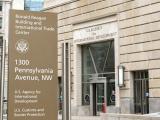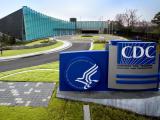Sep 21, 2009 (CIDRAP News) – A federal review of state and local pandemic preparedness efforts identified some gaps in medical surge planning and said that, while states are typically prepared to distribute antivirals and vaccines, some cities hadn't addressed all of the recommended planning components.
The findings were released today in two reports from the US Department of Health and Human Services (HHS) Office of Inspector General (OIG).
The investigations on medical surge preparedness and antiviral and vaccine distribution were ordered by the HHS Assistant Secretary for Preparedness and Response (ASPR) in February 2008. Both are based on a representative sample of five states, plus two cities of different sizes in each of the states.
Though the studies were ordered and conducted before the pandemic H1N1 virus emerged in April, the findings come as the nation grapples with the start of a second wave of the mostly mild to moderate flu, as well as the annual fall and winter rise in seasonal flu strains.
In the medical surge report, federal inspectors looked at five components: coordination among stakeholders, recruiting and managing medical volunteers, acquiring and managing medical equipment, developing alternative care sites, and identifying guidelines for altering triage.
Among the key medical surge findings:
- All cities had established medical surge partners, but the degree of coordination varied among the locations.
- Fewer than half of the cities had started to recruit medical volunteers, and none of the states had launched electronic systems to manage them, as required by the ASPR by Aug 2009.
- All cities had obtained medical equipment for a pandemic, but only three of five states had an electronic system to track it.
- Most towns were in the early stages of planning alternate care sites, and none had yet developed plans to identify the scope of care and how they would manage, staff, and supply the sites.
- Most cities had not established guidelines for altering triage, admission, and patient care, and many of them said they worried about the legal risks of setting the guidelines and asked for more assistance from state and federal officials.
- All cities conducted medical surge exercises, but none of them documented the activities consistently.
The OIG investigators recommended that the ASPR and US Centers for Disease Control and Prevention (CDC) emphasize the importance of the five medical surge components, as well as the need to consistently document lessons learned from preparedness exercises.
Given the states' concerns about legal protections for medial professionals and volunteers who respond to pandemics and other public health emergencies, the OIG suggested that the ASPR work with states or even federal officials to develop appropriate shield laws in the event that altered standards of care are needed.
OIG inspectors also urged federal officials to facilitate the sharing of information and best practices among states and cities and provide them with training and technical assistance on key challenges such as identifying alternate care sites, managing medical equipment, and identifying alternate care standard guidelines.
The ASPR agreed with all of the OIG recommendations. Though the CDC did not formally comment, it provided technical comments that investigators used to finalize their report.
In a 2008 review, the ASPR found few gaps in state readiness for antiviral drug distribution and noted that states were doing "very well" in developing pandemic flu vaccination plans. However, the OIG said those reviews did not assess local readiness in those two areas.
In today's report, OIG officials found that none of the 10 cities had started planning in all eight of the distribution and dispensing components that are specified in HHS pandemic influenza guidance.
A high percentage of cities had addressed receiving and staging, as well as dispensing, components, but fewer had spelled out plans for tracking, vulnerable populations, and priority groups. The weakest areas for cities were security, storage, and transportation.
All towns had conducted exercises involving distribution and dispensing, but most did not produce after-action reports or improvement plans.
On the other hand, all cities had collaborated with community partners—such as schools, emergency management agencies, and hospitals—to develop and test their distribution and dispensing plans.
In its recommendations, the OIG advised the CDC to work with states to:
- Improve local pandemic flu vaccine and antiviral drug distribution and dispensing preparedness by determining why so many seem to be in the early stages of planning
- Prioritize planning areas that can be addressed by leftover or future pandemic funding
- Develop practical distribution and dispensing plans
The OIE investigators also urged the CDC to ensure that cities consistently create exercise after-action reports and improvement plans and facilitate the sharing of pandemic flu planning, response, and new promising practices.
The CDC said it agreed with the last two recommendations but wasn't clear if it concurred with all of the items about shoring up distribution and dispensing plans. However, the CDC said it plans to use some of the OIG's suggestions to address the recommendations and acknowledged that resources in the June 2009 federal supplemental appropriations act would help it act on some of the items.
See also:
OIG report on pandemic preparedness and medical surge
https://oig.hhs.gov/oei/reports/oei-02-08-00210.pdf
OIG report on pandemic preparedness and vaccine and antiviral distribution
https://oig.hhs.gov/oei/reports/oei-04-08-00260.pdf



















